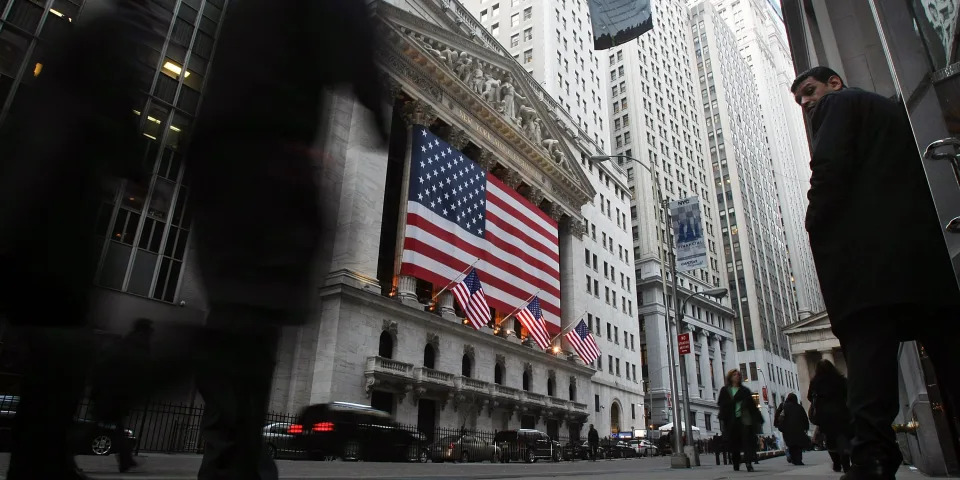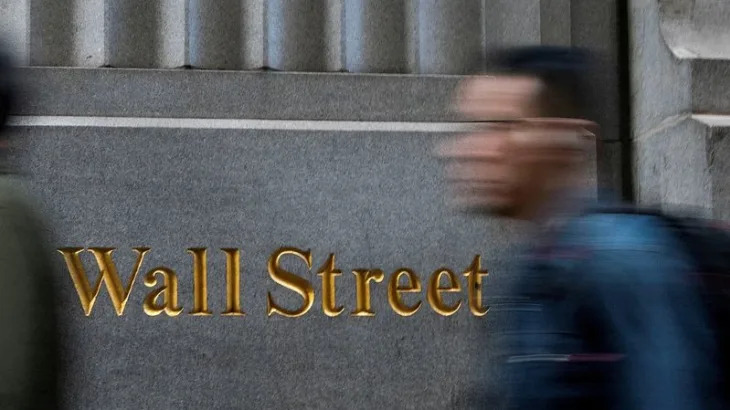Check back for updates throughout the trading day
U.S. stocks turned lower in early Wednesday trading, thanks in part to another rise in Treasury yields and an extended dollar rally, as investors looked to recoup some of yesterday's selloff that was tied to surging inflation risks.
Updated at 9:35 AM EST
Red open
The S&P 500 was marked 9 points lower, or 0.14% in the opening minutes of trading, with the Nasdaq down 25 points, or 0.1%. The Dow fell 62 points while the mid-cap Russell 2000 slumped 22 points, or 0.99%.
Benchmark 10-year Treasury yields were last marked at 4.712% while the U.S. dollar index was marked 0.6% higher against a basket of its global peers at 109.196.
Updated at 8:35 AM EST
Sliding claims
Around 201,000 Americans filed for first-time unemployment benefits last week, the Labor Department reported, a smaller-than-expected total that could offset the impact of the ADP Employment report.
The headline figure compares with a Wall Street forecast of 218,000 and the prior week-period tally of 211,000.
Benchmark 10-year-note yields were last marked at 4.703% while rate-sensitive 2-year notes were trading at 4.283%, putting the yield difference between the two at around 42 basis points.
Stocks were little changed following the data release, with futures indicating a 5 point decline for the S&P 500 and a 31 point pullback for the Nasdaq.
Updated at 8:19 AM EST
Solid, but slowing
Payroll processing group ADP said 122,000 new jobs were created in the private sector last month, a smaller-than-expected reading that could tame some of the market's near-term inflation concerns.
The headline tally was down 24,000 from November, ADP said, with service sector hiring, particularly in trade and transportation, leading the hiring pace.
“While overall growth for the month was healthy, industry performance was mixed,” said the group's chief economist, Nela Richardson. “Manufacturing was the weakest we've seen since spring. Financial services and leisure and hospitality were also soft.”
Updated at 7:42 AM EST
Trump tariff threat
President-elect Donald Trump is planning to use the International Economic Emergency Powers Act to justify the use of tariffs across a range of goods from rivals around the world, CNN reported, suggesting a sharper focus on trade deficits and protectionism heading into his second term in office.
The news hit stocks hard, with the S&P 500 reversing a premarket gain to be called around 13 points lower at the start of trading. Futures put the Dow in line for a 98-point opening-bell decline and the Nasdaq was priced for a 90-point pullback.
Benchmark 10-year Treasury note yields, meanwhile, hit a fresh cycle high of 4.726%.
Stock Market Today
Stocks finished sharply lower on Tuesday, with the S&P 500 falling more than 66 points, or 1.1%, amid a notable mover higher in Treasury yields that followed stronger-than-expected jobs and activity data as well as a mixed auction of $39 billion in 10-year notes.
A big pullback for Nvidia ( NVDA ) , alongside declines in megacap names such as Apple ( AAPL ) and Tesla ( TSLA ) , pulled the Nasdaq into a 378-point tailspin in a heavy-volume trading day saw 20.5 billion shares change hands across all markets.
Treasury yields have remained the market's focus this week following a series of moves that have underscored investors' inflation concerns as well as the uncertainty tied to the new administration of President-elect Donald Trump.
Benchmark 10-year note yields hit a late-April high of 4.699% yesterday after the Labor Department posted a stronger-than-expected reading for November job openings and foreign buyers backed away from a second consecutive coupon auction from the Treasury.
The Atlanta Fed's GDPNow tracker, meanwhile, upgraded its assessment of fourth quarter growth to 2.7% from 2.4%, adding further pressure on bond prices and paring bets on a spring Federal Reserve rate cut.
Related: Analyst resets bank stocks forecast ahead of earnings
On Wall Street, the inflation concerns, as well as the market's broader uncertainty over tax, tariff and immigration policies from the White House, continue to linger into the Wednesday session.
Key stretch for markets
"With the next couple of weeks ushering in the first jobs report, inflation data, and earnings season of the year, we’re entering a stretch that could determine whether bulls regain their footing after the December dip," said Daniel Skelly, head of Morgan Stanley's Wealth Management Market Research & Strategy Team.
"From a seasonal perspective, January has been more mixed in recent decades, with the S&P 500 positive for the month in only 10 of the past 20 years," he added.
Heading into the start of the trading day, futures contracts tied to the S&P 500, however, suggest an opening bell gain of around 21 points, with ADP's National Employment Report slated for 8:30 am Eastern time.
Related: Bonds hold the keys to what's next for stocks
The Dow Jones Industrial Average, meanwhile, is priced for a 131 point advance while the Nasdaq is looking at a 92 point gain from last night's close.
In other markets, global oil prices are trading at the highest levels in three months, with U.S. crude topping the $75 per barrel mark, following a surprise decline in OPEC production over the month of December and renewed demand tied to the resilient domestic economy.
More Wall Street Analysis:
Overseas, Europe's Stoxx 600 was marked 0.33% higher in Frankfurt, with the FTSE 100 gaining 0.21% in midday trading in London.
Overnight in Asia, the Nikkei 225 followed Wall Street lower with a 0.26% decline while the regional MSCI ex-Japan benchmark fell 0.57% into the close of trading.
Related: Veteran fund manager issues dire S&P 500 warning for 2025






